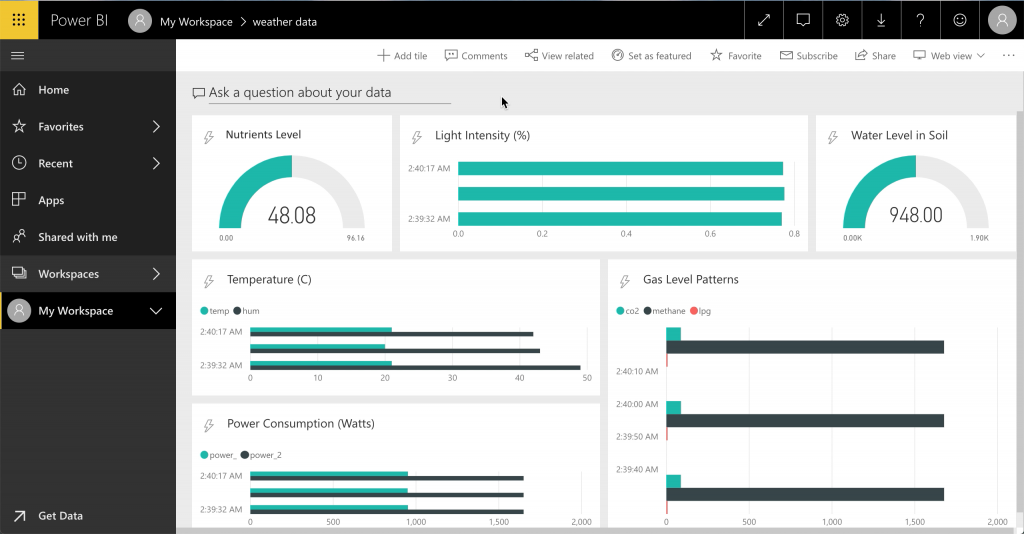Autonomous Agriculture
Energy Efficiency . Sustainable Farming . Connected Hubs
Energy Efficient Autonomous Agriculture
The project utilizes hardware-AI integration to increase plant production quantity and quality, through remote monitoring and autonomous control of several parameters in agriculture and energy.
Energy optimization and water management would mitigate the agricultural demand on natural resources. The system also reduces operational costs by reducing pesticides usages and manual labour.
Food Security And The Future of Agriculture
Population increase
- Food and Agriculture Organization of the United Nations has estimated food production will have to increase by 70% by 2050 to accommodate the population increase.
Current agricultural forms and management
- Inability of current agricultural forms to produce sufficient yields to accommodate the substantial growth in population, amidst significant socioeconomic migration away from farmlands, where the average farm sizes are in continuous decline.
- Average farm size in the majority of world countries is in continuous decline, with significant socioeconomic migration away from farmlands, where younger generations move away to cities to look for more secure ways to earn a living
- High cost of crop production and farm operations
- Inefficient management of natural resources, such as water overusage in irrigation
Climate Change, Food Production Security, and Climate Migrants
- More noticeable in the last few years, as parts of the world were hit with record cold weathers followed by record high weathers, flooding, hurricanes, and other natural disasters
- Major speculations regarding food production with estimations that nearly half of the world’s population will be living in areas of high water stress by 2030.
- The World Bank estimates that Latin America, sub-Saharan Africa, and Southeast Asia will generate 143 million more climate migrants by 2050. Such migrations will exacerbate humanitarian and food security crises.
Energy/Resources Consumption in smart agricultural systems
- Power supply and energy generation required to power irrigation, heating, mechanical, communications, and monitoring systems introduce further operational challenges.
- Water scarcity, treatment, and transport may also pose additional challenges requiring additional water management operations.
The rapid development and implantation of feasible solutions in agriculture and energy generation and optimization are urgently needed to address major global challenges within the next few decades.
Connected Community
Sensors' networks in farms provide farmers with detailed soil quality data, including information about soil moisture, pH, temperature, light exposure, humidity, and nitrogen (N), phosphorus (P) and potassium macro-nutrients' concentrations throughout the seasons. By connecting farms to such networks , farmers would be able to have access to precision planting tools to more accurately monitor, control, and predict their yields.
Main goals behind this project:
Provide farmers with the sensors and data analytics to optimize plants' growth and energy and resources consumption
Connect farms with smart city infrastructure, such as city's smart water networks
Provide individuals, especially in remote areas, with the tools and data necessary for them to grow food in their own homes, thus, providing them with a total control over where their food comes from and how it’s grown
Significantly reduce emissions due to pesticides and other chemicals usages in agriculture, as well as carbon footprint associated with "fresh-produce" transportation



System Architecture
Connected energy and agricultural monitoring and control platforms.
Communications System
Connect the several home-based agricultural hubs and farms together, as well as an app to promote sharing between farmers.
Current Setup
Sensors and Actuators
Several controllable parameters: temperature, humidity, air pump, water pump, LED panel, pH regulation, carbon dioxide concentration.
Stream/Visualize Data
The data is visualized and streamed in real-time in Power BI.
Setup with Azure
Sensors are connected to Microsoft Azure's cognitive services and IoT Central.
Weather Integration
Weather forecasting data, using an open source weather API, integrated with energy generation.



Microsoft: AI for Earth Grant Award- Lead Researcher
Received the grant along with scientists, researchers, and developers from Canada (Simon Fraser University, University of British Columbia, New York Institute of Technology- Vancouver) and Belgium (KU Leuven, Vrije Universiteit Brussels, imec).
My role: Architect, design, and build the energy and agricultural monitoring and control systems. Build the communications systems between the several agricultural hubs as well as fetch weather forecasting data from a weather API. Connect the systems together, then upload collected data to Azure, and stream/visualize the data in real-time in Power BI.
People: Dr. Hans Goverde, Dr. Johan Loeckx, Dr. Amin Milani Fard, Dr. Hasan Cavosoglu, Julie Foulon, E. Victor Barthélémy, Alexandre Frerie, Brice Devleeshower,


